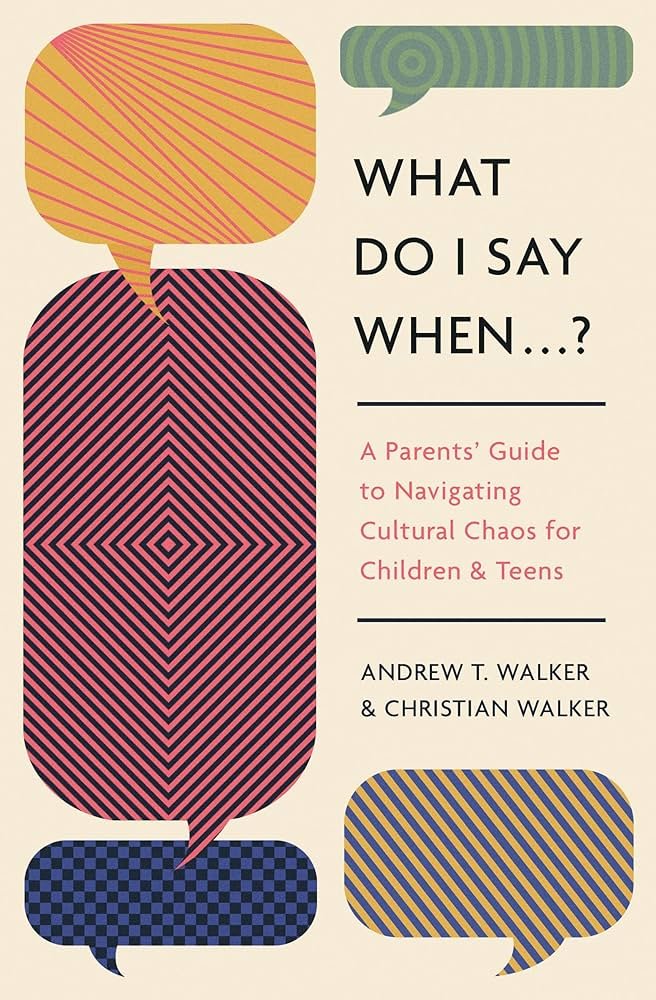What Do I Say When…?
What Do I Say When…?: A Parents’ Guide to Navigating Cultural Chaos for Children & Teens
By: Andrew T. Walker & Christian Walker
“We are called to witness to the truth for the sake of truth itself, not because it will be met with total gladness or joy by all, but because the proclamation of the gospel is the means by which the Lord redeems those he’s called to salvation.”
“You must catechize and disciple your children at ever-younger ages intentionally, or else the culture will do so unintentionally and with greater effectiveness. If you don’t teach your children, the world will.”
I read this book in tandem with Parenting without Panic in an LGBT-Affirming World by Rachel Gilson. Apparently both Crossway Publishing and The Good Book Company had similar plans to release a short parenting guide on some of the cultural issues of the day and how to relate them at age-appropriate levels.
I decided to read them back-to-back and compare them.
In brief, I would say that I liked Parenting without Panic better, however it was written for parents with kids 11 and under— which is me— and I felt like she did a better job providing more specific illustrations and ways of communicating.
To parse it out more, the books do kind of have different targets.
Gilson’s book is targeted for younger kids and is focused on LGBT questions and thoughts on identity.
What Do I Say When addresses a broader range of topics and provides talking points for three different age groups. They don’t list out the ages, calling them ‘floors’ instead, so the parent can decide what group of points and questions would fit their child’s level of understanding. Some of the other topics in What Do I Say When include politics, human dignity, abortion, technology, and persecution, as well as chapters pertaining to transgender, sexuality, and identity categories.
Regardless of which book (or both) you decide to read, all three authors were quick to remind us that as parents, these books, though helpful, are not enough. We need to do the due diligence of familiarizing ourselves with the issues, the arguments, the defenses, and what the Bible says about them.
It’s not a question of whether our kids will learn this stuff, it’s a matter of WHO will be teaching them. Will it be us? Or will we allow their schools, their friends, or their entertainment choices tell them what is right or wrong, true or false.
It’s not enough to send our kids to Sunday school and hope they are getting enough truth to combat the lies of the enemy. As parents we are raising these kids and teaching them every day what it means to follow Jesus and obey his word and trust his design for how we live our lives.
If that overwhelms you, take heart, because that’s why these authors have written their books! These are a great starting point for any parent. Beyond that, both books provide further resources and other books that delve into each topic more deeply. Especially this one.
To read more of my thoughts on Parenting without Panic, click HERE for my full review.
Now I will focus more on What Do I Say When…? specifically.
Just as Rachel Gilson has her own qualifications for authoring her book, Andrew and Christian both do as well.
Andrew writes, teaches, and speaks on cultural issues regularly and Christian writes children curriculum and understands how to apply concepts in developmentally and age-appropriate ways.
The format for the chapters of their book is an introduction on each of the ten topics, then an explanation on what God says about it, followed by a parental guide divided into three ‘floors’ for different understanding levels (4-8; 8-12; 12-16), and concluded with a list of further reading resources.
They encourage parents to use it as a family devotional resource. To discuss a chapter around the dinner table and learn the applicable (provided) memory verse that ties it all together. But it has versatility in its function.
For the most part I liked the set-up and I definitely like the memory verse component (though I might replace a verse or two with a different one), but I’m not sure I liked the bullet-point-only reference. I understand that makes it more accessible, but with a title like ‘What Do I Say When…?’ I was hoping for a more question/answer type formatting with example questions of what kids like to ask and how you respond.
Instead they provide conversation starters— questions WE ask THEM. Most of them were answered within the teaching part of the chapter, but some of the questions I wish they would have given point-blank answers to reference.
I like their reminder from the beginning that we cannot save our children but “We should pray over our children, eagerly teach them his truth, and trust that God will be faithful to finish the good work that he has started.” (Phil. 1:6)
This is one of many resources that will help equip us to that end. We should take this responsibility seriously but not be burdened by the results. It’s easier said than done, but our children will recognize whether we are teaching them with calm, confidence, and trust or with fear, frustration, or anger.
There is definitely a good flow to this book as it starts with a chapter on human dignity that is followed by abortion. The chapter on sexuality is followed up by chapters on gender, homosexuality, identity, and transgenderism. Then we have technology and political engagement— how do we handle our beliefs and behave in public (or private) spaces.
The last chapter is on hostility and persecution, which I thought was a good chapter to have.
“There is now a social cost to being a Christian.”
Even at young ages our kids are noticing more and more that our family rules differ than other peoples’. Our friends do things we don’t. We might get teased or mocked for our beliefs or rules. Peer pressure is very real and it is good to prepare our kids and equip them for that reality. If they are not surprised by the hostility, and understand where that comes from, they will be better able to let it roll off their back than internalize it and wonder if their beliefs are the wrong ones.
The Walkers admit that they couldn’t include all the topics in the book without it becoming way too long. One topic that isn’t included that I think would be really important to ground all of these truths is to study with and teach your child about why we can believe that the Bible is true.
If we don’t know why we can trust the Word of God, we will be easily be swayed by arguments of the culture. I don’t know how many people have told me that the Bible is written by men for men and is full of sexism; that it’s written so long ago that we can’t trust how it was put together; that it’s not a true story, it’s just symbolism and a way to show people how to relate to one another.
But I have read a lot about this topic and I have yet to see an argument against the Bible that holds any weight. We don’t have to be afraid of questions, there are answers if we look for them.
And if we teach our kids all of these truths found in the Bible but don’t give them confidence to defend the Bible itself, then it will be easy for others to crumble their foundation. The Bible is true and can be trusted and our children need to know that.
A couple books for that off the top of my head: Surviving Religion 101 by Michael Kruger or Taking God at His Word by Kevin DeYoung
Click HERE for some apologetic book recommendations which are books that defend the faith.
They provide a lot of extra reading options for each chapter and I’ve read/reviewed several of them. I’ll list the ones on my site that they mentioned for your reference as well:
Tearing Us Apart: How Abortion Harms Everything and Solves Nothing by Ryan T. Anderson and Alexandria DeSanctis (on my TBR) — Abortion
Is God Anti-Gay by Sam Allberry— Homosexuality
What Does the Bible Really Teach about Homosexuality? by Kevin DeYoung— Homosexuality
How Should We Then Live? by Francis Schaeffer (on my TBR)— Identity
The Rise and Triumph of the Modern Self by Carl S. Trueman— Identity
What God Has to Say about Our Bodies: How the Gospel is Good News for Our Physical Selves by Sam Allberry— Transgenderism
12 Ways Your Phone Is Changing You by Tony Reinke— Technology
How the Nations Rage by Jonathan Leeman— Political Engagement
Gentle and Lowly by Dane Ortlund— Hostility and Persecution
They also provide a list of resources to help stay on pace with culture changes including Albert Mohler’s ‘The Briefing’ podcast which I’ve listened to and appreciate, and Mama Bear Apologetics which is super helpful when relating cultural things to children specifically. New City Catechism, as mentioned in the book, was something we’d already been using and has been a great app to have because they put the question and answer in the form of a song and my kids caught on to them very quickly. For older kids they have commentary that further explain the short answers.
Recommendation
Especially if you have kids 10 or older, I would recommend this book. I may prefer Gilson’s book for the younger kids, but she doesn’t cover all the topics the Walkers do.
I’m still working on quelling all of my fear regarding my kids’ faith and future, but I can tell you that I have a lot less fear and a lot more confidence in parenting from reading books like this that remind me that my beliefs are grounded in the love and truth of God who created each of us on purpose with a purpose. I don’t have to wonder if I’m on the wrong side of history because I know I am on the right side of God’s truth.
You can have that confidence too. It just takes some study of God’s Word and there are plenty of teachers who have provided books like these to walk you through it.
Be encouraged and inspired to guide your kids through difficult conversations knowing you are leading them to the ultimate place of love, truth, belonging, and life.
**Received a copy via Crossway in exchange for an honest review**
This book just released August 13, 2024. You can order a copy of this book using my affiliate link below.
Share this book review to your social media!


